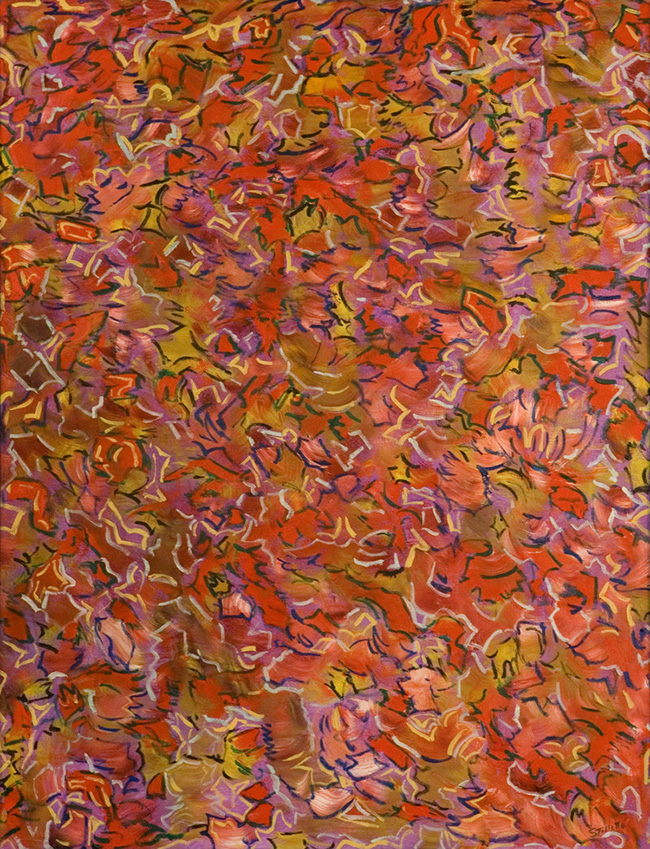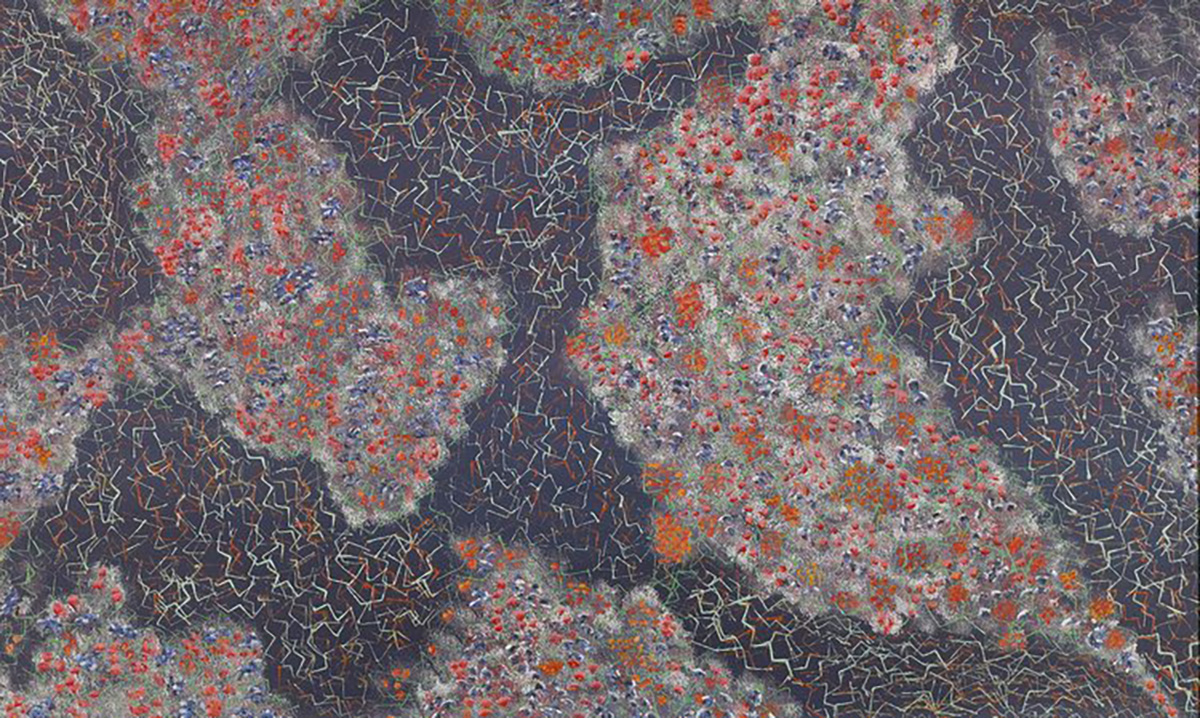Quinn Stilletto is often described as a “cult artist,” a title that reflects his unique and enduring presence in Cleveland’s art scene over the past thirty-five years. Born in London in 1952, Stilletto immigrated to the U.S. with his family in 1956, initially landing in New York before settling in Cleveland’s inner city. He was educated in Cleveland’s public school system, and his early life seemed headed toward a different path entirely, with aspirations for priesthood. However, a series of decisions made outside of his control rerouted him to the liberal arts, with a focus on religion and theology.

During his extended academic years, Stilletto worked in public health, co-founding the Cleveland Free Clinic, a testament to his ongoing interest in social issues. But it was his move back to Cleveland in 1980 that reignited his focus on art—his lifelong passion. He embraced what he refers to as “The Big Art,” an expansive vision of creativity that he believes exists as a language in itself, shaping his approach to his own artistic practice and interactions with other artists.
Stilletto’s career is marked by a rich variety of creative endeavors, both personal and collaborative. He served on the Board of Directors at the Coventry Art Gallery and was a design assistant for Giancarlo Menotti’s production of Amal and the Night Visitors in 1982. In 1993, he collaborated with David Martin, the former director of St. Augustine Manor, to create the Cleveland AIDS Memorial, also known as the Caritas Memorial Collection. This project holds deep personal meaning for Stilletto, as it honors members of the arts community who were lost during the early days of the AIDS epidemic, a tragedy that affected him profoundly. The memorial now features over 100 works of art contributed by Cleveland artists and a few national names, and Stilletto continues to curate this powerful collection.

While public art and community-focused projects are part of his journey, Stilletto’s personal artistic output spans a wide range of mediums. His fine art includes paintings, photography, and sculptures, which have been shown in group exhibitions from Kansas City to New York. His work was even featured at New York’s Agora Gallery in Chelsea in 2006, further establishing him as an artist with a broad reach. He’s also had solo exhibitions in Cleveland, including at the Barth Gallery, Pentagon Gallery, Kelly Randall Gallery, Greg Martin Gallery, and Novo Metro. These shows represent the diversity of Stilletto’s body of work and the range of emotions and ideas he explores.
Stilletto’s art is deeply philosophical. He draws from his background in theology, often touching on spiritual themes, though his relationship with organized religion took a sharp turn in the early 1970s. He openly acknowledges that while his pursuit of piety ended, it left him with a lasting sense of truth. His view of art is that it is not merely a vocation but a higher calling. In his words, “Art is my assignment,” a task given to him by an unmanifest source. For Stilletto, the artist does not create—only God creates. Instead, the artist receives and translates those divine impulses into visual form. This belief underscores his approach to making art, where he often speaks of developing a relationship with each piece, letting the work itself reveal deeper truths through the process.

Stilletto has also pursued more commercial avenues in his career. He worked as a staff designer for Retex International Corporation, designing textile surfaces, and as an associate photographer at Crowther Photography, where he specialized in fashion photography and product presentation. His design firm, Concept by Stilletto, founded in the late 1980s, took on various creative projects, from album cover designs to creating floor plans for product showrooms in Miami. Most recently, under the label “Unwanted Children,” he launched a website featuring apparel with bold pop culture themes. These designs challenge social norms and promote conversation around topics that Stilletto feels are often ignored or misunderstood. His motto, “Truth is always in style,” is an apt summary of his philosophy both as an artist and as a person.
Stilletto’s work, whether personal or commercial, shares a common thread of challenging norms and exploring the deeper truths of existence. His art, like his life, is characterized by a restless energy and a refusal to be confined to a single category. Whether he’s curating a memorial collection, designing provocative apparel, or producing fine art, Quinn Stilletto remains committed to pushing boundaries and inviting others to see the world through his lens.
Stilletto himself admits to living in what some might call a fantasy world, but it’s a world where he feels most at home. His art allows him to exist on multiple planes of reality, a concept he often explores in his work, which ranges from deeply introspective pieces to those that challenge societal conventions. In a sense, Stilletto has built his life and art on the idea that truth is inherently unstable, ever-shifting like sand beneath our feet. But for him, that uncertainty is where the real art begins.

